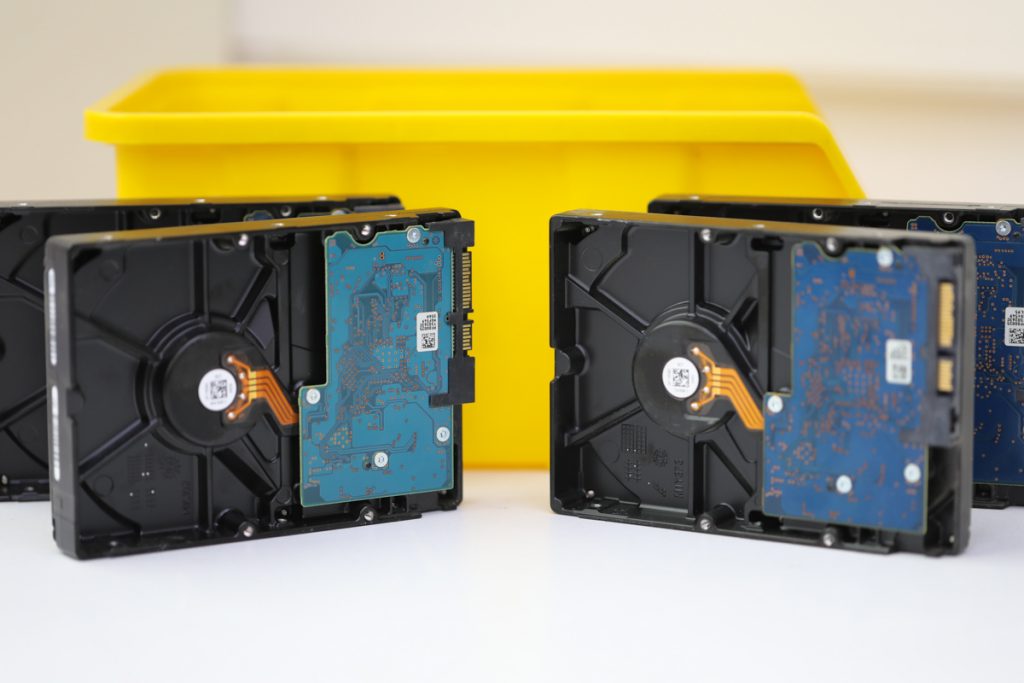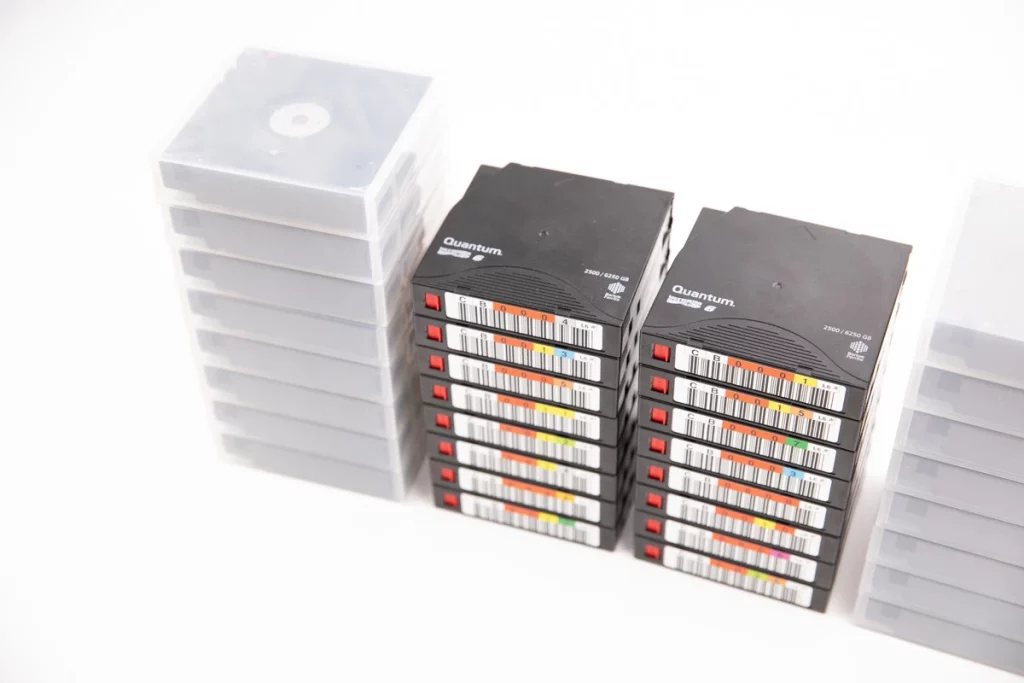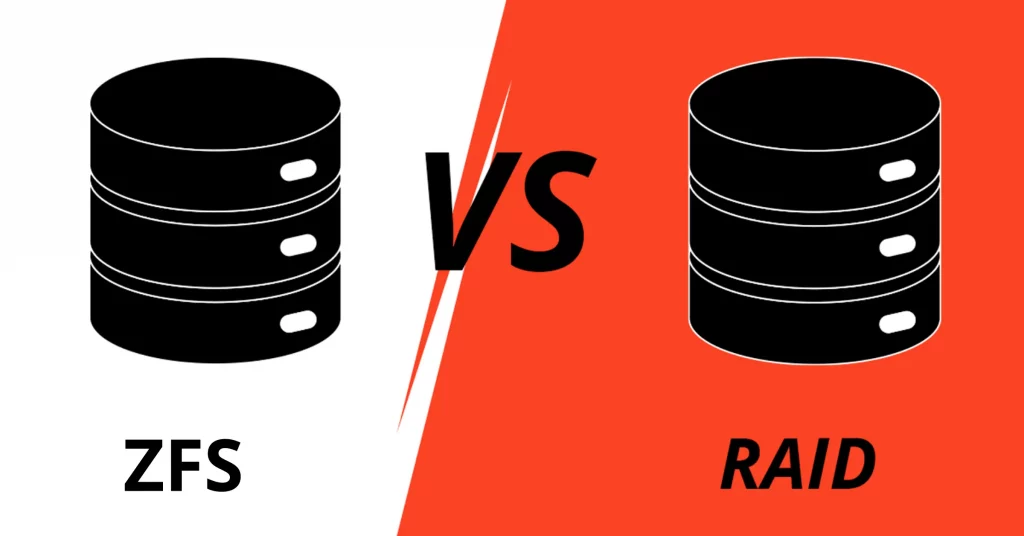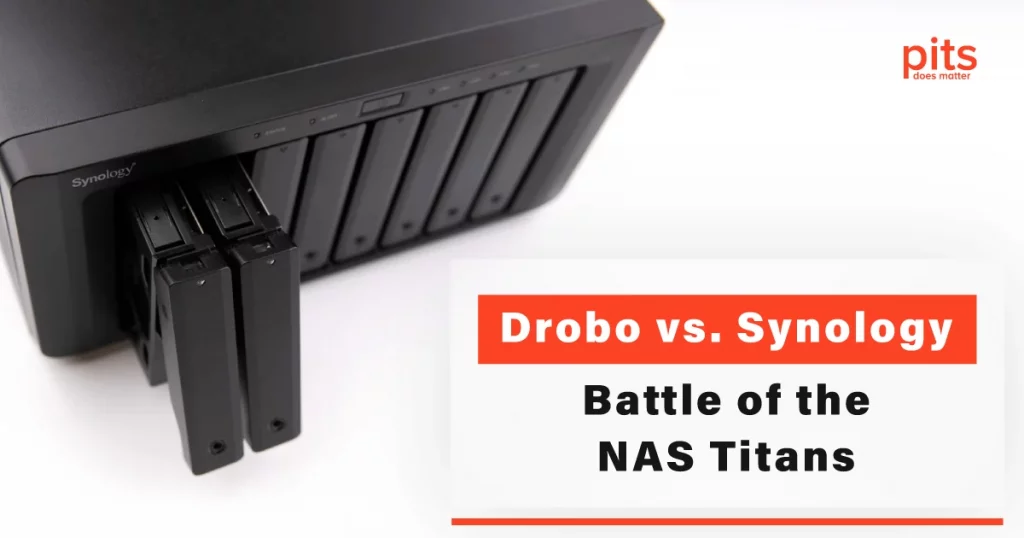Nowadays, data is the most crucial asset of any business. Even if you make regular backups, you need a safeguard to ensure your data is secure and can be accessed at all times, even during a drive failure. Adding RAID to your storage environment is one of the most cost-effective ways to keep your data protected and always available.
So, which RAID level is best for your business? The response heavily relies on your requirements and preferences. Although various RAID levels exist, selecting the best RAID array is complicated.
The Importance of Choosing the Right RAID Array for Your Business
RAID (Redundant Array of Independent Disks) systems play an important role in businesses of all sizes, providing increased data reliability and ensuring that important data is protected against hardware failures. Here are some of the key reasons why RAID is important for businesses:
Data Protection
Data is one of a business’s most important assets, and data loss can result in serious consequences, including lost revenue, damaged reputation, and legal liabilities. RAID provides data protection by creating redundant copies of data on multiple hard drives. If one drive fails, the data can be reconstructed from the redundant copies, preventing data loss.
Increased Performance
RAID can improve a business’s storage system’s performance by allowing multiple drives to read and write data simultaneously. Striping, a RAID technique, spreads data across multiple disks, increasing read and write speeds. This can be particularly important for businesses that require high-speed access to large amounts of data, such as databases or media files.
Improved Availability
RAID can also improve data availability by allowing the system to continue operating even if one or more hard drives fail. This reduces downtime and ensures critical business operations can continue even during hardware failures.
Scalability
RAID systems can be easily expanded by adding hard drives or upgrading to larger-capacity drives. This allows businesses to scale their storage systems as their data storage needs grow.

Cost-Effective
Although RAID systems require additional hard drives, they can be more cost-effective than purchasing individual hard drives to provide the same level of data protection. RAID can also extend the lifespan of hard drives since the workload is spread across multiple drives, reducing the wear and tear on individual disks.
RAID Levels and Their Usage
RAID arrays use disks that operate in various modes and have wide functionality. The structure of the array largely determines the speed and uninterrupted operation of the server and the safety of the data placed in it. One can select the most suitable RAID configuration depending on the required parameters.
RAID 0
RAID 0 provides low cost and maximum performance but does not provide failure protection. The failure of even one of the disks leads to the complete loss of all data. Businesses typically use RAID 0 for tasks that require fast and swift access to large amounts of temporary data on disks.
RAID 1
RAID 1 consists of two duplicate data sets located on separate disks. It also provides the highest data availability by maintaining two identical copies of all data. There must be at least two disks in the configuration. With this setup, the available storage capacity is 50% of the open disk space in the RAID array.
RAID 5
A striped technology designed to provide non-failure data storage but without data duplication like RAID 1 and RAID 1E. Data is written interweaved across all disks in the array, but for each data stripe of the array, one data block of that stripe is reserved to hold the parity data computed for the other blocks in that stripe.
RAID 6
Data is spread across multiple disk drives, with a double parity scheme used for data storage. This allows two drives in the array to fail, providing better fault tolerance than RAID 5. It also allows cheaper drives for data storage. This RAID level is equivalent to RAID 5 but includes a second parity spread across different drives.
RAID 10
Combines RAID 0 striping and RAID 1 mirroring. This layer has improved striping performance and mirroring redundancy. RAID level 10 is the result of forming a RAID 0 array from two or more RAID 1 arrays. This level provides fault tolerance by allowing one drive to fail for each sub-array without data loss.
RAID 50
It combines multiple RAID 5 sets with RAID 0. Striping helps increase performance and capacity without adding drives to every RAID 5 array. Doing so would degrade data availability and harm performance in degraded mode. RAID 50 includes striping RAID 0 onto lower level RAID 5 arrays.
How to Choose the Best RAID Configuration?
Choosing the right RAID level for your business is a critical decision that can impact your storage system’s performance, reliability, and cost. Here are some factors to consider when choosing a RAID level:
Performance
Consider the performance requirements of your business applications. RAID 0, 10, and 50 offer the best performance since they use striping, while RAID 1, 5, and 6 offer better data protection but may have slower write speeds due to parity calculations.
Data Protection
Consider the importance of the data stored on the RAID system. If data loss is not an option, then RAID 1 or RAID 6 may be the best option since they provide the highest level of redundancy. RAID 5 is also a good option, but remember, it only protects against one disk failure.
Capacity
Consider the capacity requirements of your business. RAID 0 and RAID 10 offer the most capacity since all drives are used for data storage, while RAID 1 and RAID 5 provide less capacity due to mirroring and parity calculations. RAID 6 provides even less capacity due to double parity.
Budget
Consider the cost of the RAID system. RAID 0 is the least expensive since it does not require redundancy, while RAID 1 and RAID 6 are more expensive due to the additional drives required. RAID 10 and RAID 50 can be the most expensive due to the high number of drives required.
Maintenance
Consider the maintenance requirements of each RAID system. RAID 1 and RAID 10 are the easiest to maintain since they do not require any parity calculations. Due to the parity calculations, RAID 5 and RAID 6 can be more complex to maintain.
Future Growth
Consider the potential for future growth of your business. If you add more drives, RAID 5 and RAID 6 may be good options since they can be expanded easily. RAID 1 and RAID 10 may be less flexible since they require a minimum number of drives.
Securing Your RAID System
Once you are familiar with RAID levels and the main points to consider, the next step is to ensure the safety of your array.
No matter what brand your RAID hard drive is, it is only a matter of time before you have to recover lost data. Follow these steps to avoid data loss on your RAID array.
Use Antivirus Software
Viruses enter your system in numerous ways. They may appear after reading an infected file attached to an email, sharing virus files online, or visiting websites that use holes in your system’s security to destroy information. Use antivirus software to protect your RAID system from malicious attacks.
Use Surge Protection
A power surge, whether caused by the power company or lightning, remains the most common cause of data loss and possibly hard drive damage. Using a surge protector can keep your RAID safe from power surges.
Be Careful with Your Surroundings
Keep your array and servers in a safe location, kept away from falling or being hit. In case of disk failures in a RAID array, you must change all hard drives as they were bought simultaneously from the same manufacturer and have the same lifespan.
PITS Global Data Recovery Services provides fast and reliable solutions for RAID arrays. Our engineers have the skills to recover data securely. Contact us to request a consultation about your particular case.
Frequently Asked Questions
What factors should I consider when choosing a RAID configuration for my business?
When selecting the best RAID for your business, consider factors such as data protection requirements, fault tolerance, performance needs, storage capacity, and budget constraints.
What is the recommended RAID configuration for businesses that prioritize data redundancy and fault tolerance?
RAID 1 (Mirroring) is an excellent choice for businesses that prioritize data integrity and availability. It creates an exact copy of data on multiple drives, offering high data protection and fault tolerance.
Which RAID configuration is suitable for businesses that require a balance between performance and data redundancy?
RAID 5 (Striping with Distributed Parity) is a popular choice for such scenarios. It provides a good balance between performance, storage capacity, and data protection by distributing data and parity information across drives.
Are there RAID configurations that offer enhanced fault tolerance for larger storage arrays?
RAID 6 (Striping with Double Distributed Parity) is recommended for businesses that require increased fault tolerance. It provides the ability to withstand the simultaneous failure of two drives and offers higher data protection compared to RAID 5.
Is there a RAID configuration that combines performance and data redundancy?
RAID 10 (Striping and Mirroring) is a suitable choice for businesses seeking a balance between performance and data redundancy. It combines striping for improved performance with mirroring for data redundancy.
Remember to assess your specific business requirements and consult with IT professionals or data storage experts to determine the best RAID configuration for your unique needs.


